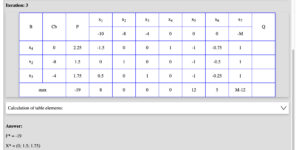这篇笔记2023年10月就想写了,但实际上拖到2024-10-27才开始学
Table of Contents
学习
学习顺序:
先看了下lp and network flow的big-M方法:

但一直没找到我想要的“使用big-M打开局面“的那种题(也就是一开始无法直接使用tableau的题),直到example 4.10我才遇到一次:

但这道题的解法是什么THE SINGLE ARTIFICIAL VARIABLE TECHNIQUE,不是我想要的big-M.
换个教材。搜到了🔗 [personal.utdallas.edu/~scniu/OPRE-6201/documents/LP07-Big-M-Formulation.pdf] https://personal.utdallas.edu/~scniu/OPRE-6201/documents/LP07-Big-M-Formulation.pdf
pdf包含了100%我想要的内容:
- 给出了一道“不能直接tableau“的例题
- 逐步分析”应该如何应对“
- 讲解big-M方法
- 给出了例题的解题步骤(虽然没有完整步骤,但前几步是有的,已经足够了)
关键的讲解在前2页:
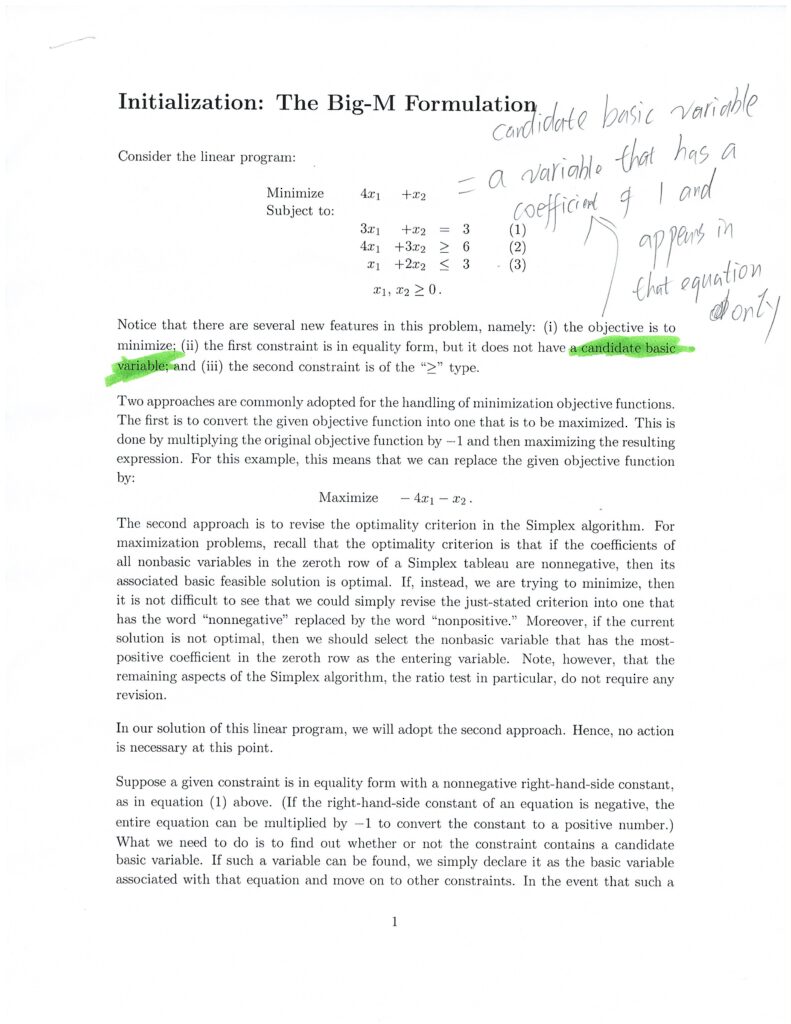
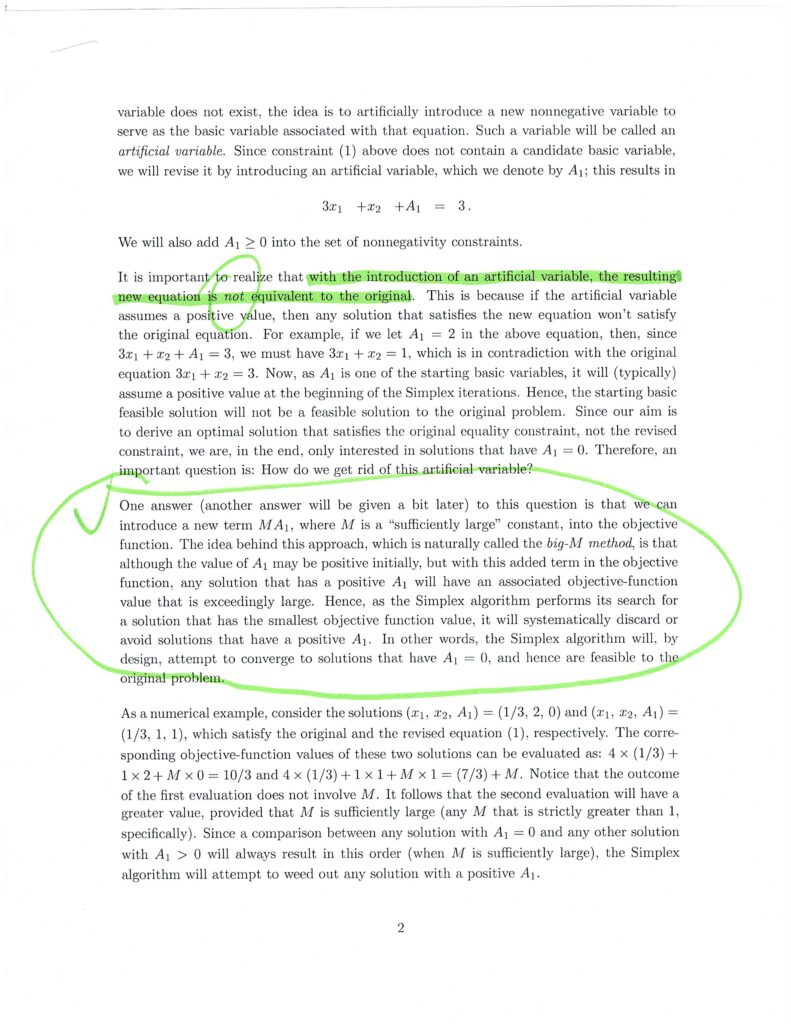
其中有个名词 candidate basic variable 在书上没找到解释,后来在这里找到了:🔗 [Initialization and Other Considerations] https://personal.utdallas.edu/~scniu/OPRE-6201/documents/LP5-Other_Considerations.html,解释为“a variable that has a coefficient of 1 and appears in that equation only”. 下面是一些例子:
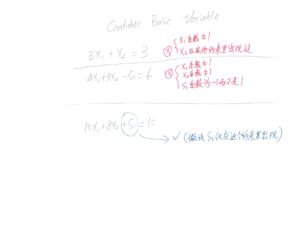
所以读完这个PDF(以及跟着做了这个pdf自带的那道例题)以后就能做example 4.10了:
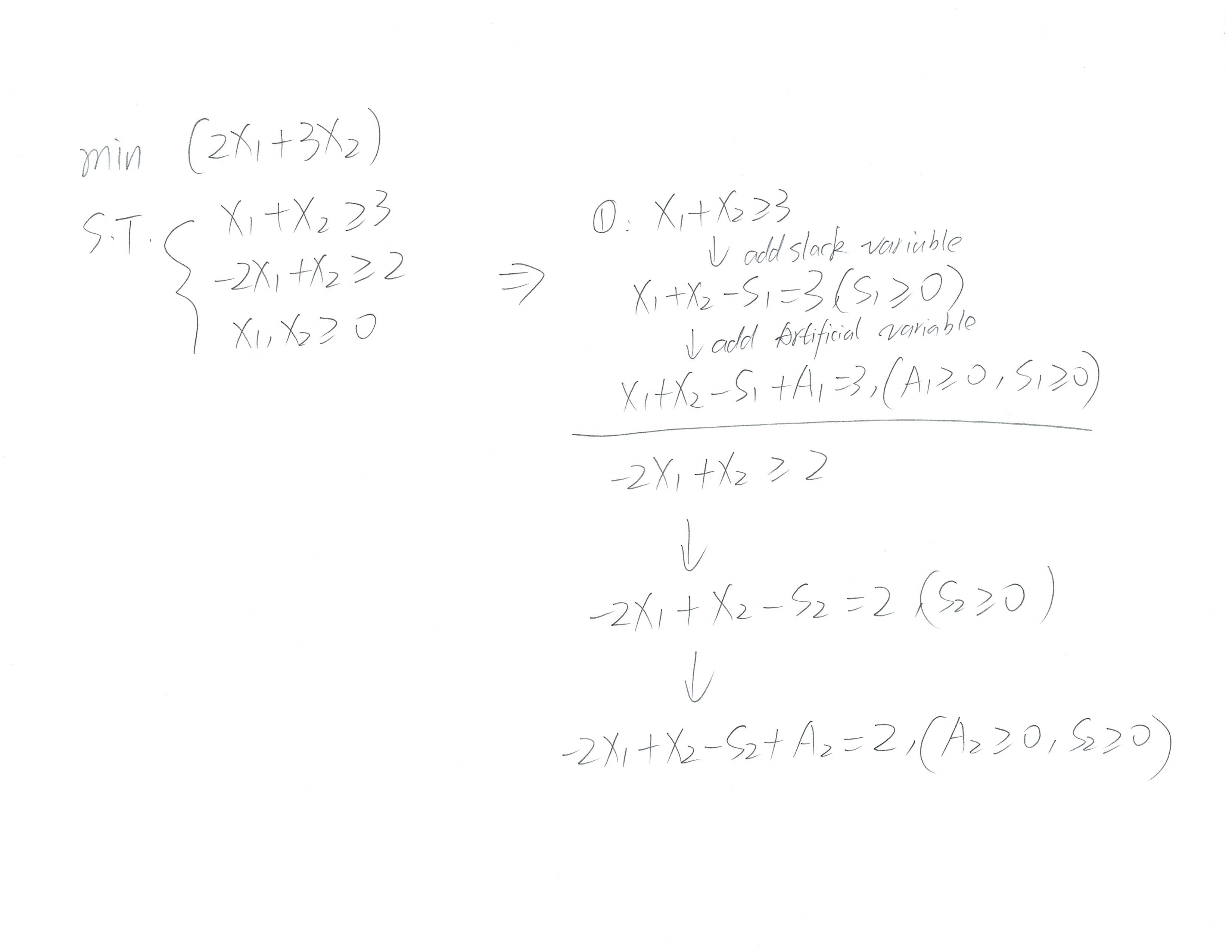
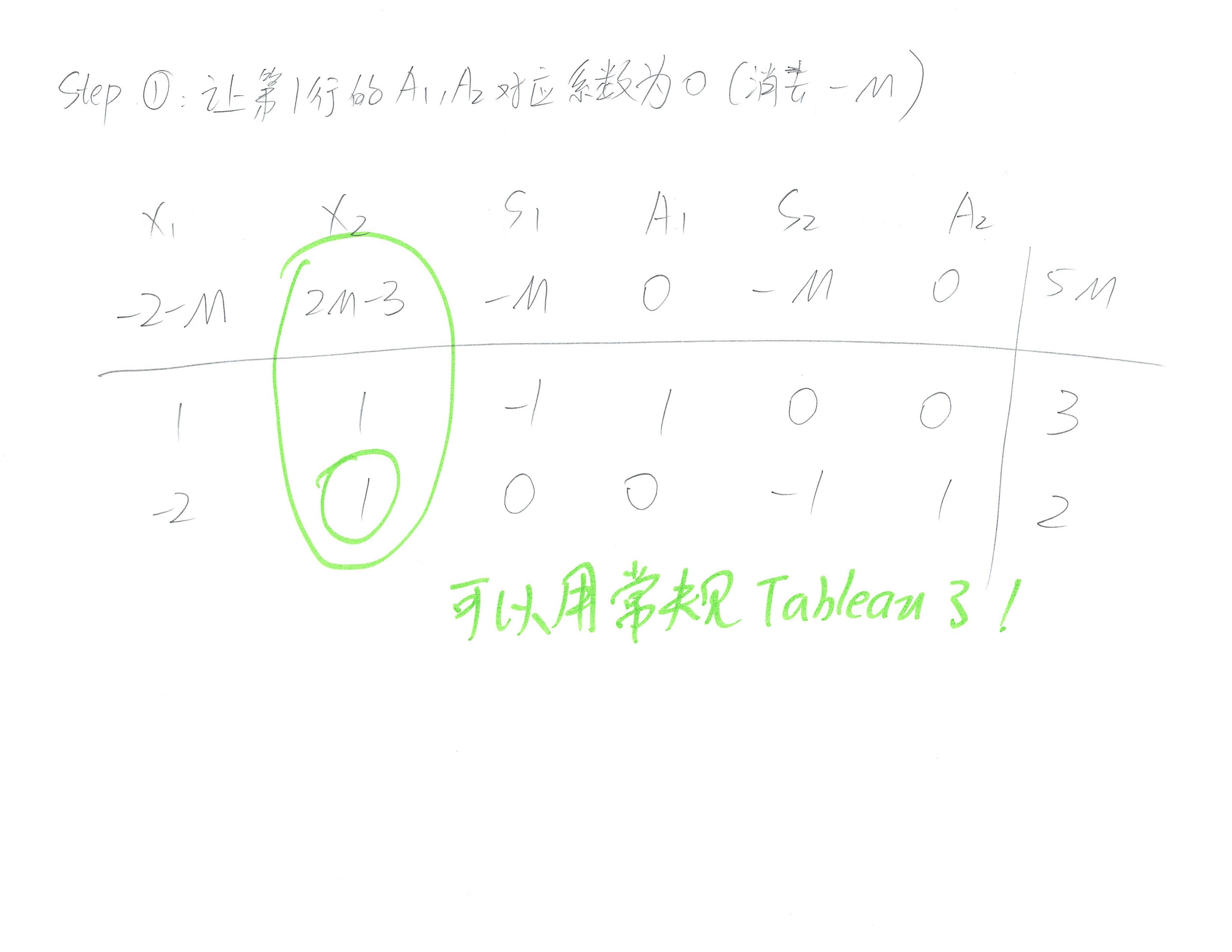
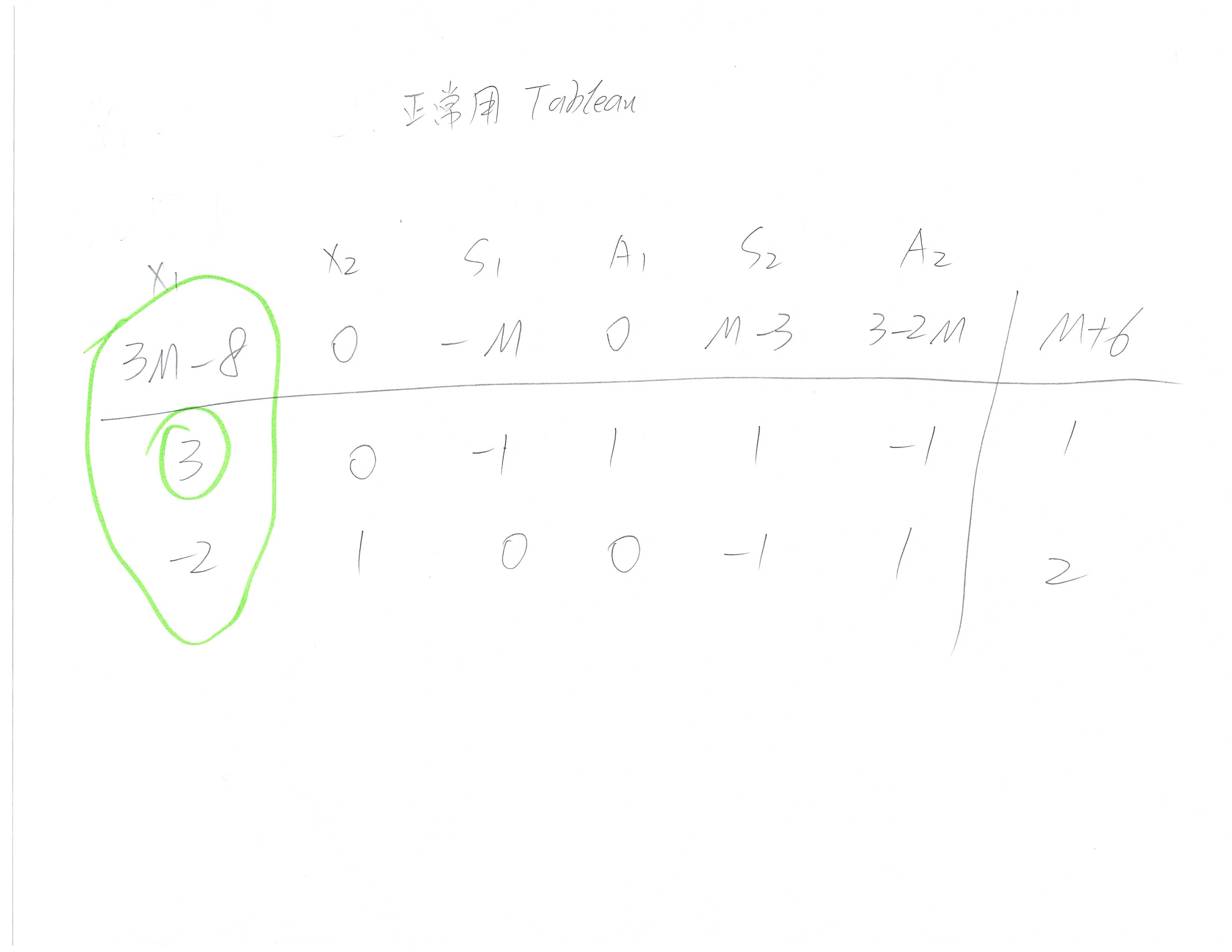
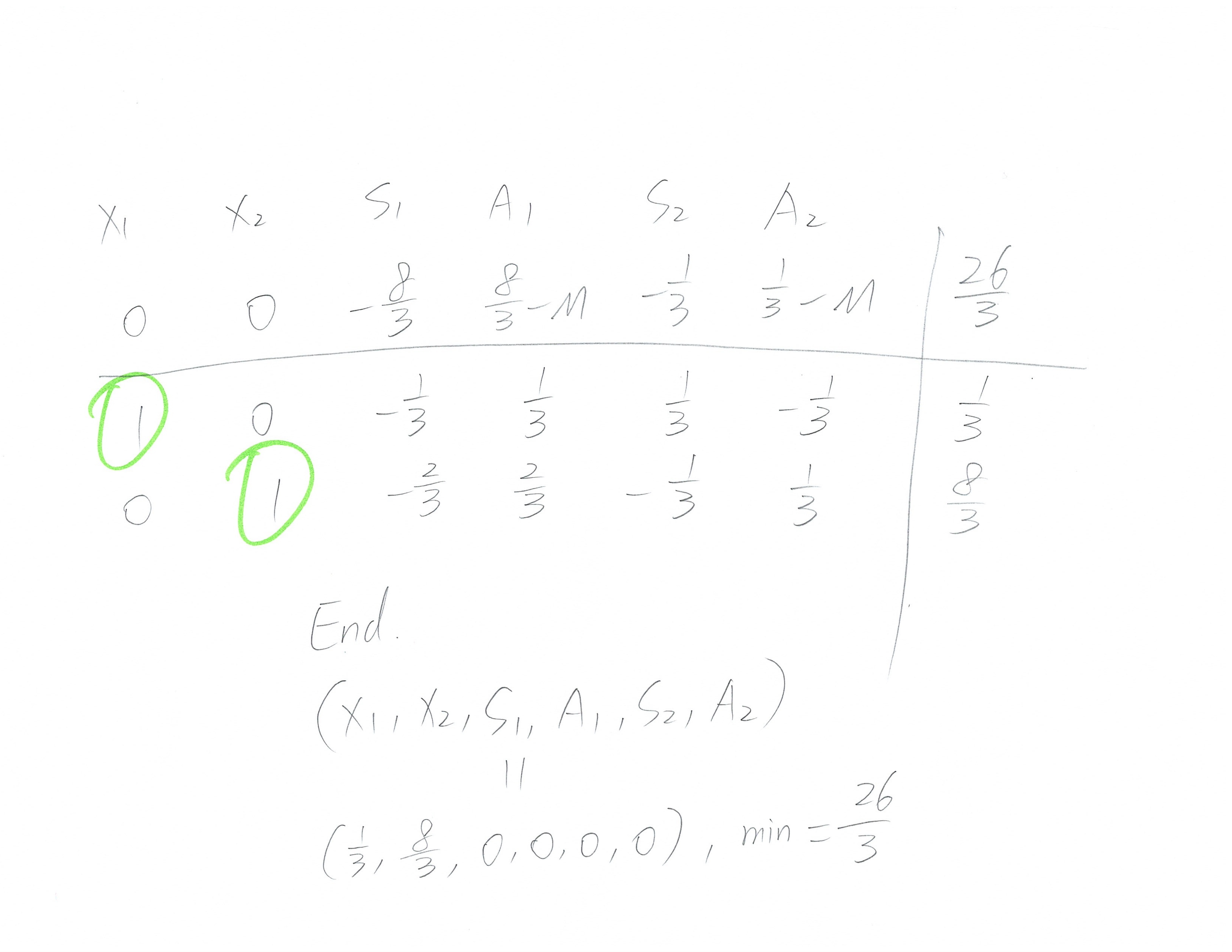
附上linprog.com的解答以便对照:

解决经典例题
例题来自🔗 [LP Tableau法 - Truxton's blog] https://truxton2blog.com/lp-tableau-method/的笔记开头部分
最后再看看这个例题:
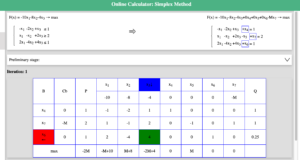
特别注意,因为这里是max()类型的问题,所以不能直接照搬上面min()的解法,要用-M*Artificial_variable
完整过程如下:
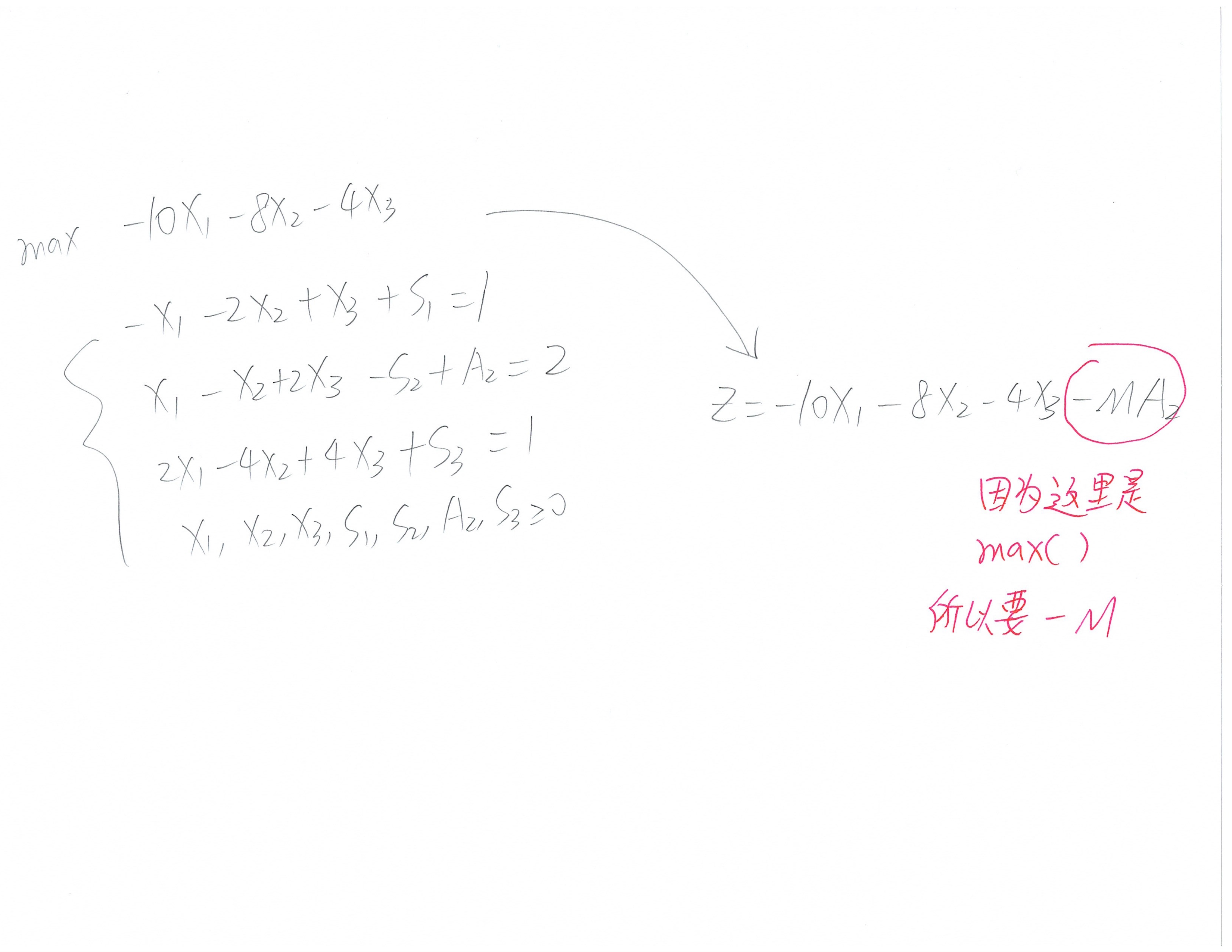
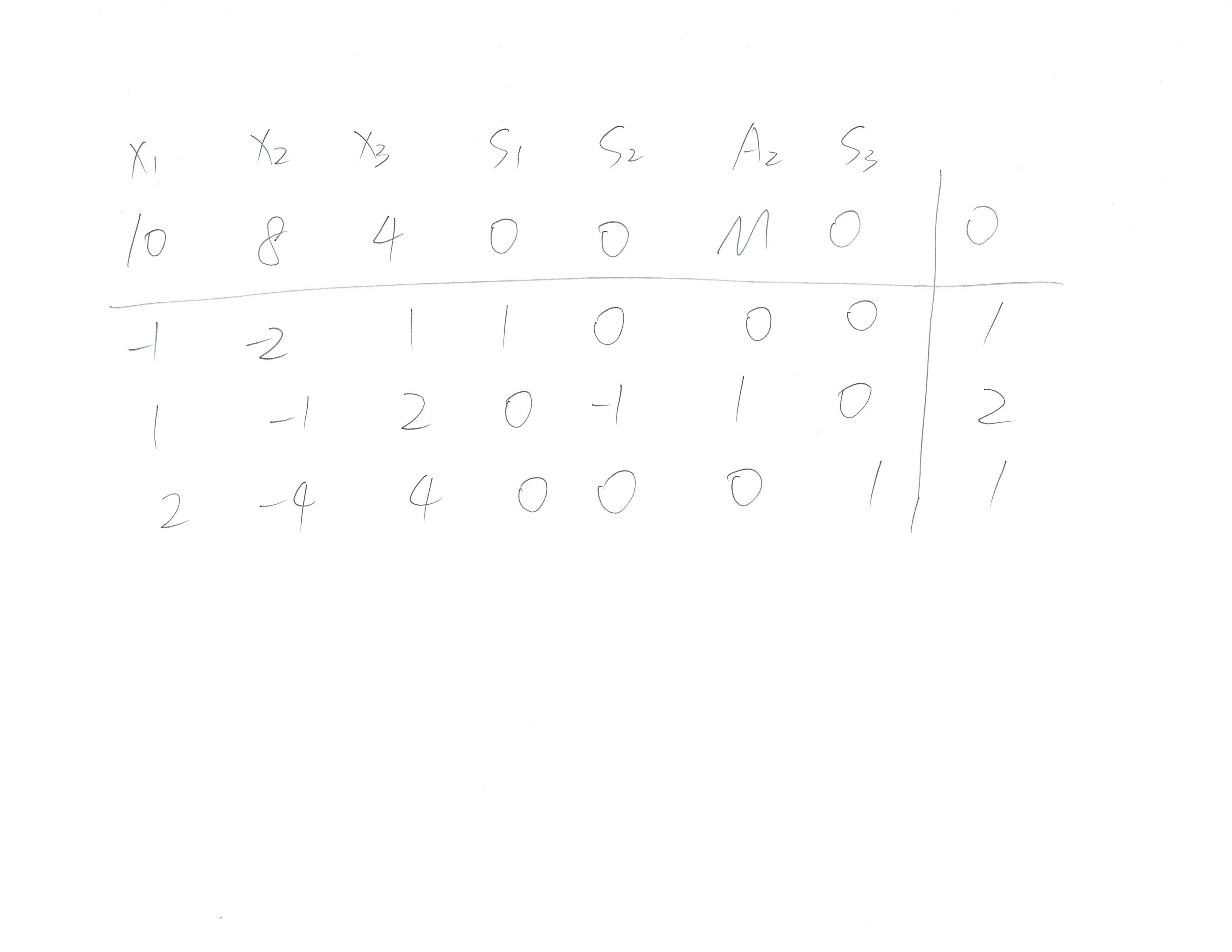
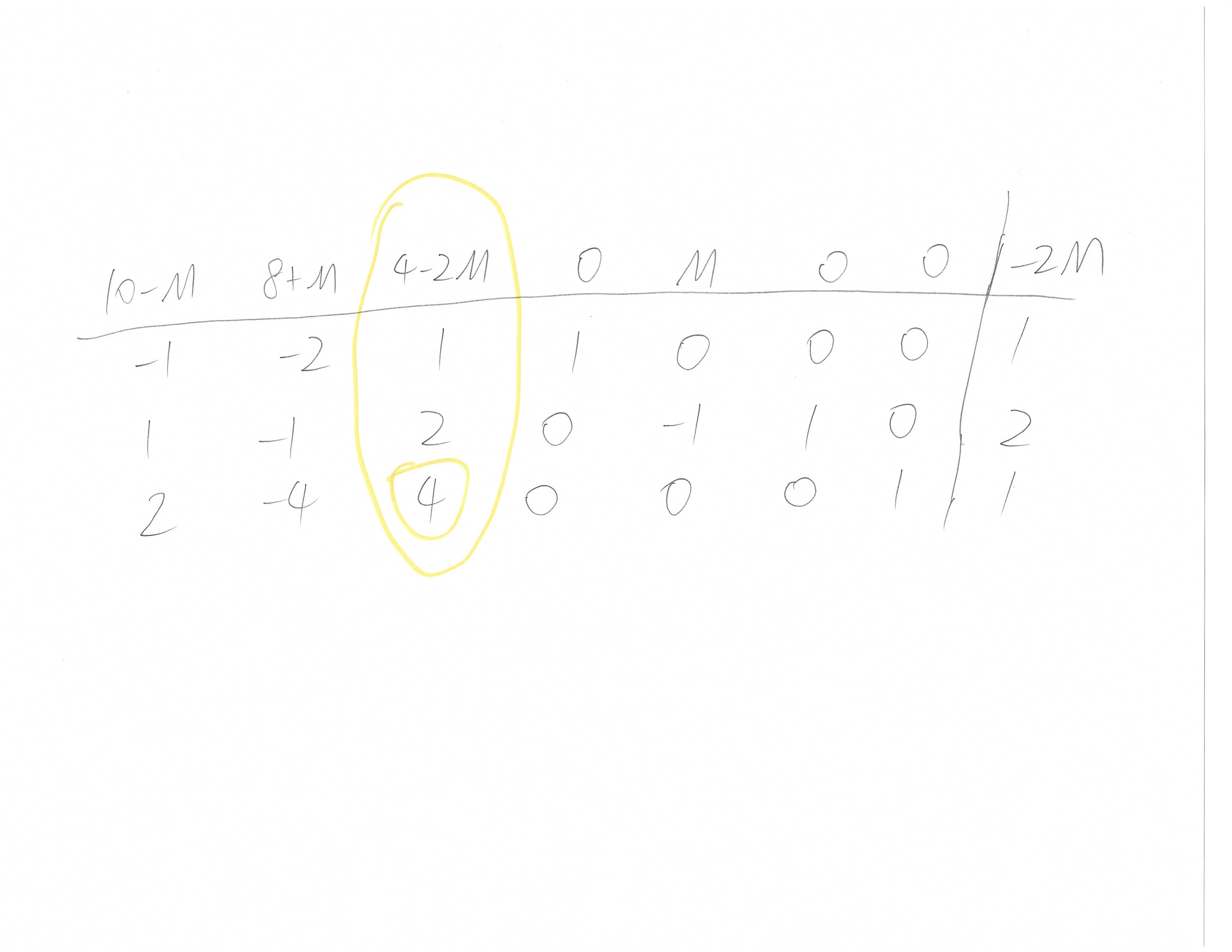

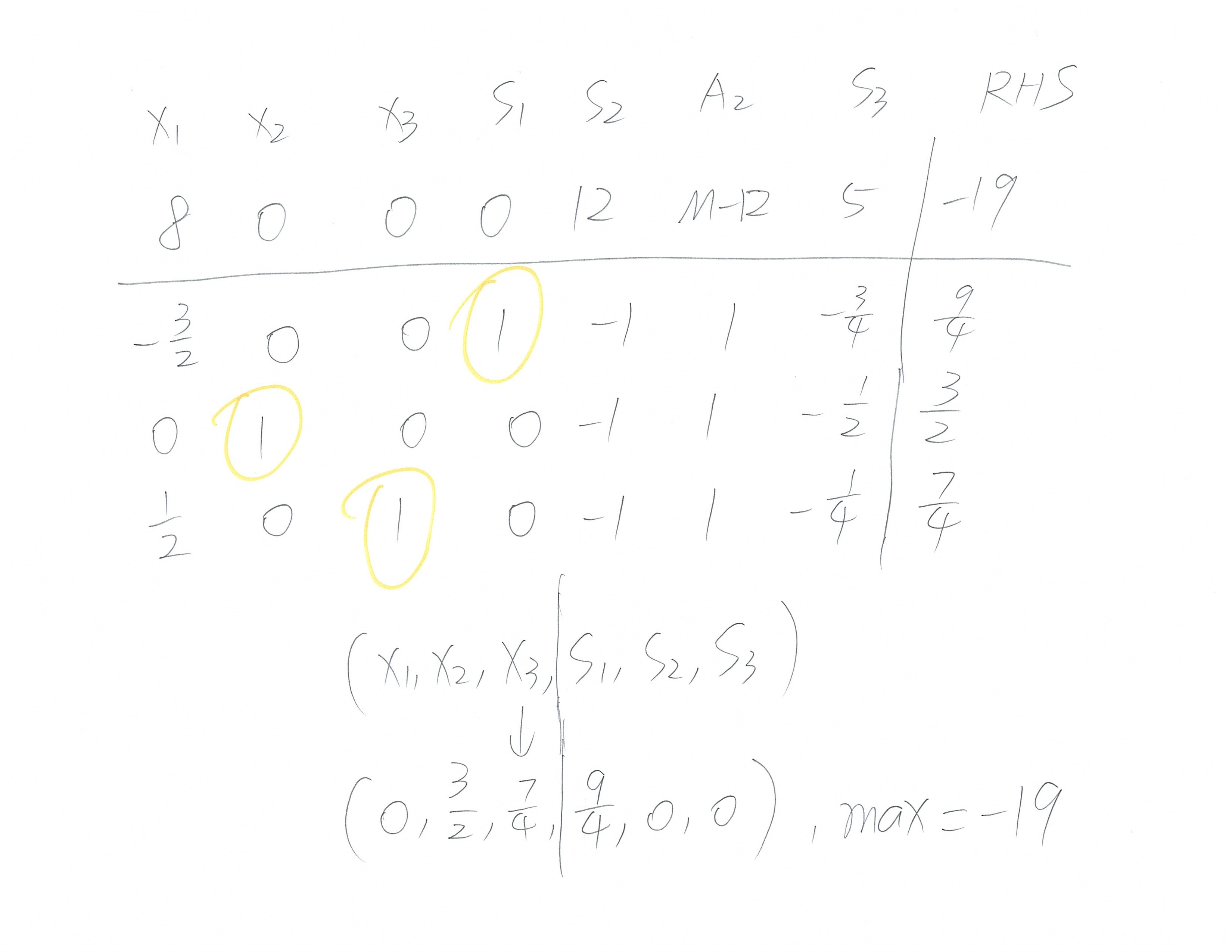
附上linprog.com的答案以供对比:
